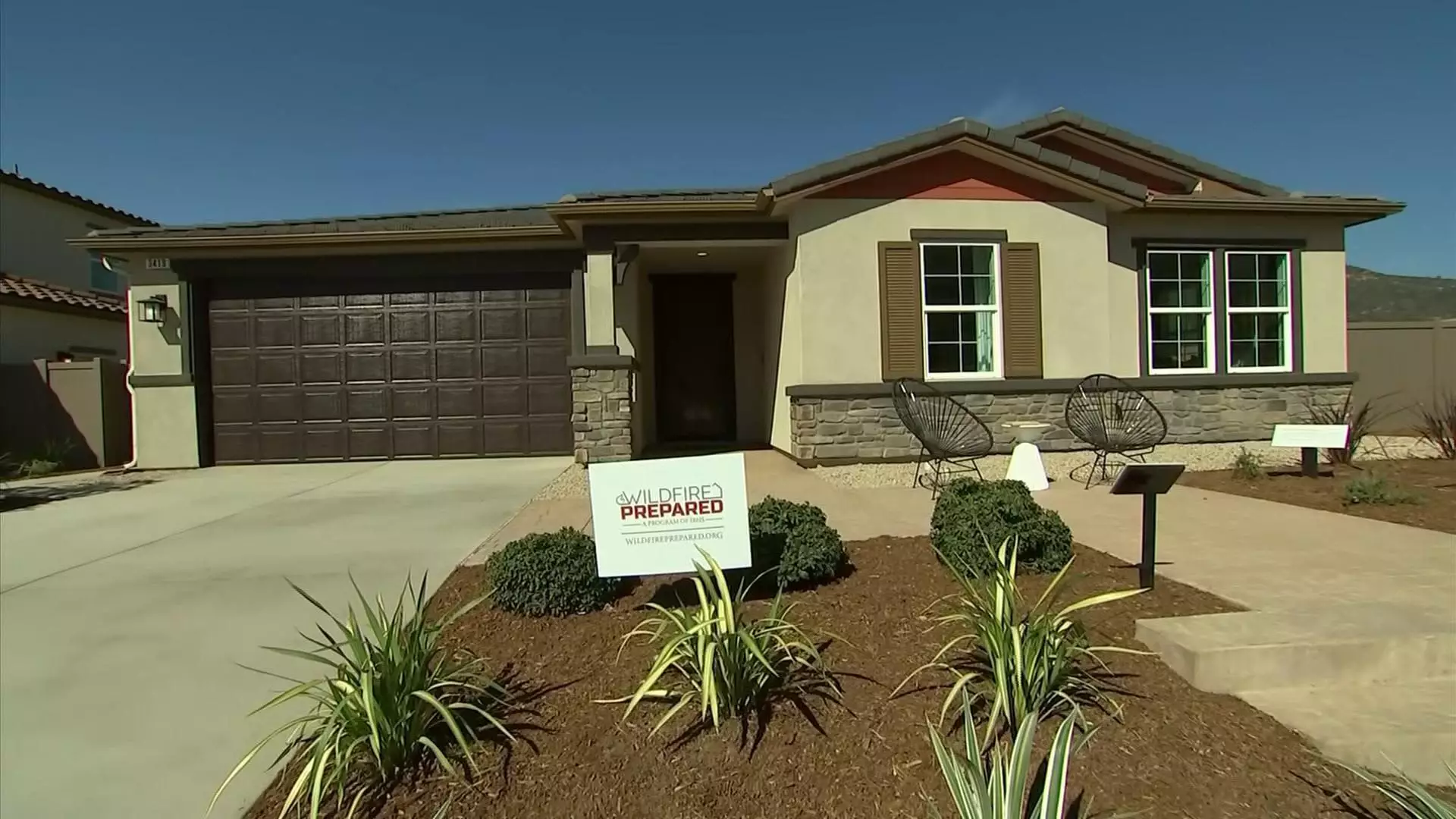In the wake of California’s catastrophic wildfires, which have obliterated thousands of homes, KB Home has stepped up to the plate, heralding a new era for residential development. Their ambitious project in Escondido, comprising 64 single-family homes, aims to redefine safety and resilience in fire-prone areas. As climate change exacerbates wildfires, initiatives like this are not just timely; they are desperately needed.
These homes are built to meet rigorous wildfire resilience standards developed by the Insurance Institute for Business & Home Safety (IBHS). Unlike traditional housing, these homes focus on combating the three primary ignition sources: flying embers, flames, and radiant heat. With such an innovative approach, KB Home is not merely reacting to disaster; they are proactively reshaping the landscape of housing in California.
Designing for Defense
The design features are impressive yet practical. Each home comes equipped with covered gutters, enclosed eaves, non-combustible siding made of stucco and fiber cement, and tempered-glass windows. By emphasizing the use of low-combustible vegetation and including metal fencing throughout the neighborhood, these properties feature a thoughtful layout aimed at slowing the vicious spread of fire. In a state where the roar of flames has become a worrying soundtrack, this thoughtful architecture could spell the difference between safety and devastation.
However, the transition toward more resilient homes did not happen overnight for KB Home. The shift in design required quick adaptation, reflecting a commitment not only to the homes but to community safety. Their regional general manager, Steve Ruffner, describes a rapid pivot to incorporate fire-resistant features, showing a willingness to innovate amid adversity. It’s an impressive feat that reflects the need for more builders to prioritize resilience in their projects.
The Price of Progress
Despite ambitious strides in fire safety, affordability remains a pressing concern in California’s real estate market. The homes are expected to range from about $1 million to the low millions, which is, quite frankly, out of reach for many first-time buyers. While KB Home claims to specialize in catering to first-time and move-up buyers, there is an inherent contradiction when properties exceed these price points. The emphasis on safety cannot come at the cost of accessibility; this balance will be critical to the community’s long-term success.
Steve Ruffner hints at ongoing work to lower costs, evaluating construction costs and trade partnerships to make these homes more attainable. But the lack of specific data around these increased costs raises some eyebrows. If the goal is to provide safe homes in a fire-prone landscape, one must wonder what sacrifices will be made to make these financially viable for a broader community.
Setting a Precedent
Even as the world witnesses a paradigm shift toward fire-resilient architecture, the Escondido project stands out as a beacon of hope. It’s critically important to recognize that KB Home is not just another builder dabbling in fire-resistant homes; they are pioneers in a critical movement that could redefine residential development across the state. As Roy Wright, CEO of IBHS, aptly points out, their project serves as a “test bed” for modern residential safety.
As other builders contemplate similar initiatives, KB Home’s success—or failure—could ripple across California’s housing market. Every new development must focus not just on aesthetics and luxury but also on resilience. California’s builders must not ignore the lessons learned from devastating fires that have claimed lives and properties alike.
Insurance in a Burning Landscape
Beyond the physical aspects of these homes, the question of insurability looms large. Recent years have shown a retreat of insurance companies from fire-prone areas, leaving homeowners scraping for affordable coverage. It’s an unfortunate irony that, in striving for fire-resilient communities, residents might still find themselves struggling to secure insurance. This reality complicates the overall narrative that these homes are wholly safe.
While these new residences offer promising features, they are not entirely fireproof. As Wright reminds us, the goal is not to eliminate risk but to mitigate destruction. Homeowners themselves must also adapt, embracing a comprehensive approach that includes landscaping, elevations, and design choices that further reduce fire risk. Until these adaptations become community norms, the question remains: will these homes truly stand as the line of defense we hope for in the next wildfire season?
With a fierce beauty that characterizes California’s landscapes comes an equally formidable risk. KB Home’s initiative is a step towards blending safety with housing, but it’s crucial that the broader industry quickly follows suit. The future of California’s neighborhoods depends on it.

